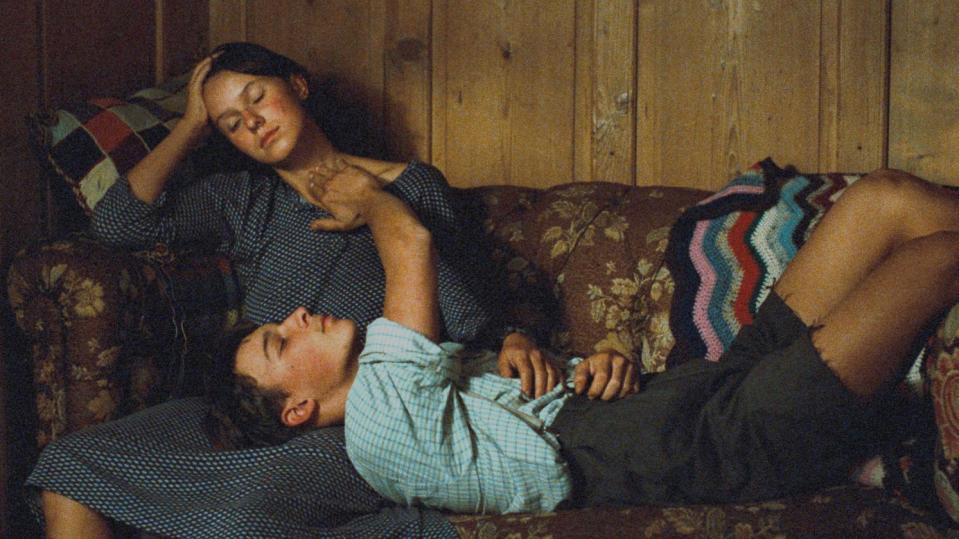‘Romeo and Julia in the Village,’ Hailed as a Masterpiece, Readied for New Premiere by Cinémathèque Suisse

Swiss national film archive Cinémathèque Suisse is finishing up a new restoration of Hans Trommer and Valerien Schmidely’s 1941 romantic drama “Romeo und Julia auf dem Dorfe” (“Romeo and Julia in the Village”), considered one of Switzerland’s best films of all time.
It is one of a number of recent restorations carried out or made possible by the film archive, which recently opened its impressive new Research and Archive Center in Penthaz, equipped with a film digitization lab and a vast storage facility.
More from Variety
Film Archives Push Heritage Cinema to Educate, Find New Audiences - Lumière Festival
Carlotta Films Preps Pasolini, Tarr Showcases, Readies Restored Releases of Truffaut, Tanaka Films
“Romeo and Julia in the Village” is particularly significant for the Cinémathèque Suisse. “It was totally unsuccessful when first released, but it is considered one of the best, if not the best Swiss film,” says Cinémathèque Suisse director Frédéric Maire. “We wanted to restore it for a long time but it was very difficult to find all the necessary elements because the original negative was recut in a re-release a few years after the first release, so we had to make a huge puzzle reconstruction to get it exactly as it was when it was first released in ’41.”
The Cinémathèque is aiming to finish the restoration by the end of the year and present it at a major festival.

Carine Roth/Cinematheque Suisse
Other upcoming releases include “The Written Face,” Daniel Schmid’s 1995 documentary about Japanese Kabuki star Tamasaburo Bando, restored in 4k by L’Image Retrouvée in Paris. Maire likewise hopes to present that film soon at a festival showcasing heritage cinema.
Switzerland is this year’s guest country at the Lumière Festival’s International Classic Film Market in Lyon, where the Cinémathèque Suisse presented restored versions of Jean-Louis Roy’s 1967 Cold War spy satire “The Unknown Man of Shandigor” and Fredi M. Murer’s 1985 drama “Alpine Fire,” about a brother and sister on an isolated mountain farm. Cinémathèque Suisse restored “The Unknown Man of Shandigor,” while “Alpine Fire” was restored by Murer himself.
The films, says Maire, are prime examples of Swiss cinema. “‘Alpine Fire,’ one of the great Swiss films, was at the time quite well received. It won the Golden Leopard in Locarno in 1985. It’s a real masterpiece.”

FMM Film GmbH
The Lumière Festival, which runs through Oct. 17, is also showing two other Swiss films (and social critiques) by Alain Tanner, “The Salamander” (1971) and “Jonah Who Will Be 25 in the Year 2000” (1976), restored jointly by the Cinémathèque Suisse and the Association Alain Tanner in Geneva.
The screening of “The Salamander” was also part of a tribute to French actress Bulle Ogier (pictured), one of this year’s guests of honor.
Switzerland’s close cultural ties with Germany, Austria and France have resulted in a common cinematic history with its neighbors, often making the Cinémathèque Suisse a natural partner on restorations and it regularly works closely with other film organizations, archives and institutions.
It recently collaborated with the Deutsche Kinemathek and the British Film Institute on a restoration of Slatan Dudow’s 1932 socialist drama “Kuhle Wampe” (known under several different titles in English, including “Whither Germany?” and “Kuhle Wampe or Who Owns the World?”).
Based on a screenplay written by Bertolt Brecht and Ernst Ottwald, and with a score by Hanns Eisler, “Kuhle Wampe” tells the timely story of a family forced to live in a tent city on the outskirts of Berlin after they are evicted from their apartment. Considered a milestone in political cinema, the film was initially censored by the German government then banned outright when the Nazis came to power.
Since the film was produced by Switzerland’s Prasens-Film along with Berlin-based Prometheus Film, Cinémathèque Suisse was able to provide necessary material for the digital restoration, which was based on a 35mm nitrate print from the BFI National Archive. “Kuhle Wampe” screened at this year’s Il Cinema Ritrovato festival in Bologna, Italy.
The film archive also collaborated with the Jérôme Seydoux-Pathé Foundation in Paris and the Cinémathèque Française to restore Abel Gance’s eight-hour silent film “La Roue” (“The Wheel”) from 1923. “We had some very important elements for the restoration,” notes Maire. The new version, restored at L’Immagine Ritrovata in Bologna, premiered at the Lumière Festival in 2019.
“Cinémathèque Suisse’s collection is one of the 10 most important collections in the world, so we often have elements that could interest other archives and we therefore cooperate a lot with foreign institutions,” he adds.
Cinémathèque Suisse is ranked sixth in the world in terms of the size, diversity, and quality of its collections, according to the International Federation of Film Archives.
Established in Lausanne in 1948, Cinémathèque Suisse also has offices in Zurich in addition to the Penthaz facility.
Best of Variety
The Best Pop Culture Halloween Costumes for 2021: From 'Squid Game' to 'Cruella
Oscars Predictions: Best Director - Does Pablo Larraín Fit the Bill of a Lone Directing Nominee?
Best-Selling Celebrity Memoirs: Stanley Tucci and Dave Grohl Join the Ranks
Sign up for Variety’s Newsletter. For the latest news, follow us on Facebook, Twitter, and Instagram.

 Yahoo Movies
Yahoo Movies 
